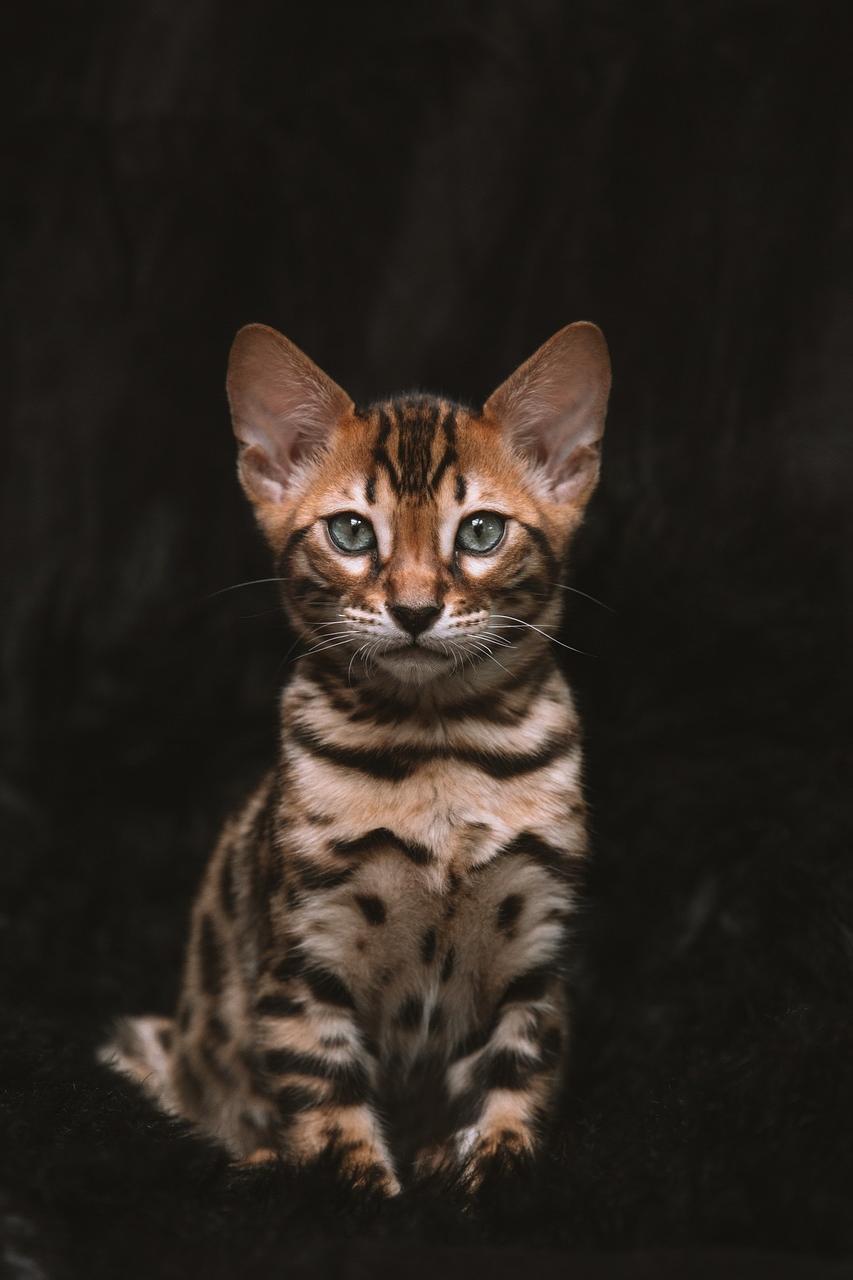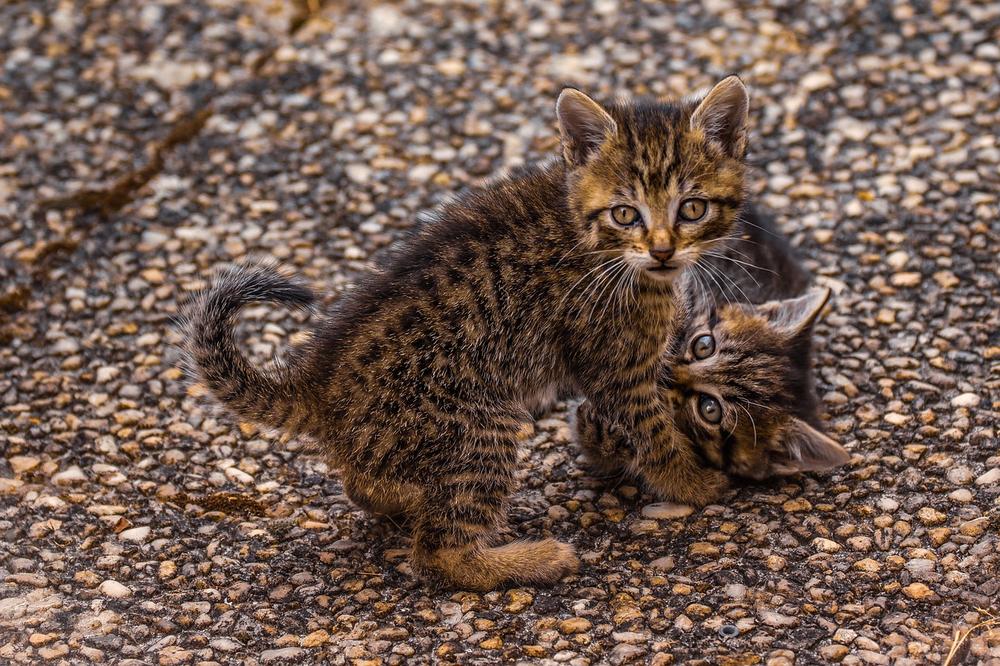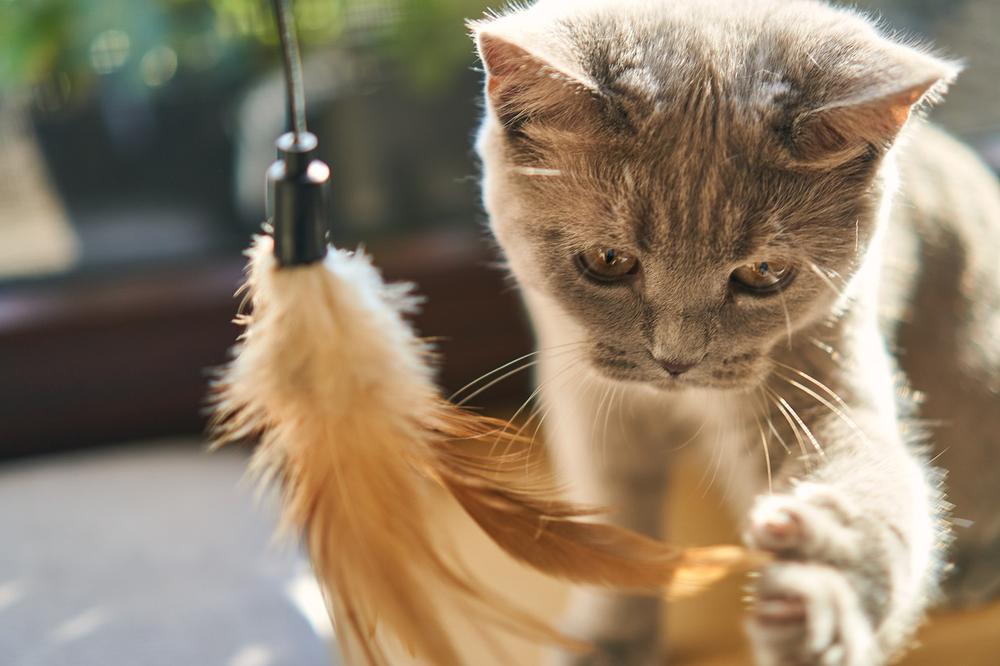Why Is My Cat So Darn SMALL? Is He Truly Fully Grown?

Ever looked at your pint-sized feline friend and wondered, "What's up with your small stature, buddy?"
Worried that something's not quite right?
Don't panic, my friend.
Let's take a closer look together and uncover the truth. 🧐
Shall we begin?
Health Concerns and Small Cat Size
If your cat is small, it could be a sign that something's up with their health, so you gotta take them to the vet.
Here are some things to think about:
- Some cats are just naturally small because of funky genetics. Like those Munchkin and Singapura breeds.
- If a cat was the runt of the litter, they might stay small 'cause they didn't have to fight for food or space when they were growing up.
- There's this thing called dwarfism, which is a genetic condition that makes cats smaller than usual and gives them short legs and stuff.
- Cats can end up small if they don't get the right nutrition or care during important growth times.
- Nasty parasites like intestinal worms can mess with a cat's ability to soak up nutrients, which can lead to them being stunted.
- Some health problems, like diabetes or hyperthyroidism, can make cats stay small.
- Just so you know, being small doesn't mean a kitty won't live a long life. As long as they're well taken care of by a vet and fed right, they'll be alright.
If you're worried about how big or small your cat is, don't wait around.
Talk to a vet to find out what's going on and what you should do. Make sure you keep an eye on their appetite and weight too.

That way, you can catch any changes and give your cat the best chance at staying healthy. 👋
Main points I'll expand upon further down this article:
- Nutrition is crucial for a cat's growth and development.
- Kittens require a high-protein and high-fat diet for healthy growth.
- Cats should have a diet mainly consisting of animal protein.
- Proper nutrition can help smaller cats catch up in growth.
- Amino acids from animal protein, healthy fats, and water are essential for cats.
- Regular veterinary checkups are important for optimal growth.
- Factors like multi-cat households and feeding dynamics can affect a cat's access to food.
- Size can vary based on breed, gender, health, and feeding habits.
- Female cats tend to be smaller than males.
- Consult a veterinarian if a kitten's growth halts before 9 months of age.
For optimal growth and development, your cat's diet plays a crucial role.
But did you know that nutritional deficiencies can hinder their potential?
Let's explore how proper nourishment and regular checkups can unlock your furry friend's healthy future.
You wouldn't want to miss out on this vital information!
The Importance of Proper Nutrition for Cat Growth and Development
A well-balanced diet is crucial for cat growth and development.
Here are some important factors to consider:
- Protein and fat: Kittens need a high-protein and high-fat diet for healthy growth.
- Animal protein: Cats should have a diet mainly consisting of animal protein for proper nutrition.
- Feeding frequency: Regular feeding at least twice daily ensures cats receive their nutritional requirements.
- Catch up growth: Even the smallest kitten can catch up in growth with proper nutrition.
- Essential nutrients: Amino acids, healthy fats, water, vitamins, and minerals are vital for cat health.
- Regular veterinary checkups: Along with a nutritious diet, regular checkups help ensure cats reach their fullest potential.
- Impact of inadequate nutrition: Insufficient amounts or poor quality food can lead to chronic health problems and malnutrition in cats.
- Factors affecting food access: Dynamics of multi-cat households, anxiety, stress, and proximity to the litter box can affect a cat's access to food.
- Monitoring feeding schedule: It's important to monitor a cat's feeding schedule to maintain optimal nutrition.
- Ideal weight: The size and ideal weight of a cat depend on factors like breed, gender, health, and feeding habits, as determined by a veterinarian using the body condition score.
Providing proper nutrition and monitoring feeding habits are key to ensuring your cat's growth and development.
No beating around the bush: Further down the blog post, I'll share information about when cats stop growing in size? So keep reading to find out when your cat will reach its full size.
And now, let's delve into factors that specifically contribute to a cat's size, including breed characteristics, genetics, and other variables.
This understanding will help us determine if your smaller-than-average feline companion falls within the normal range of their particular breed...
Size Variations Among Cat Breeds
| Cat Breed | Size Variation | Possible Reasons |
|---|---|---|
| Maine Coon | Usually larger and more muscular | Due to their genetic makeup and breed characteristics, Maine Coons tend to be larger than average cats. They have a long and robust body structure. |
| Siamese | Typically thin and sleek | Siamese cats have a slender physique with a lithe body. Their genetic traits contribute to their sleek appearance and elegant stature. |
| Persian | Generally smaller and fluffier | Persian cats are known for their fluffy coats, which can make them appear larger than they actually are. Despite their luxurious fur, they tend to have a relatively small size. |
| Abyssinian | Moderately sized with a muscular build | Abyssinians have a moderate size and are known for their lean yet muscular bodies. Their athletic build allows them to be agile and active. |
| Ragdoll | Usually larger with a gentle physique | Ragdolls are larger in size compared to many other breeds, but they possess a calm and gentle nature. Their size and docile temperament make them great companions. |
| Scottish Fold | Varies from small to medium-sized | Scottish Folds can have a range of sizes, but they generally fall within the small to medium-sized category. Their folded ears add uniqueness to their appearance. |
| Sphynx | Generally small with a slender body | Sphynx cats are typically small in size and have a slim physique. Due to their lack of fur, they might appear more petite than other breeds, but their body shape is still proportionate. |
| Bengal | Medium to large with a muscular frame | Bengals have a distinctive muscular build and are medium to large in size. Their active nature and playful tendencies often accompany their robust physique. |
Different cat breeds, my friend, come in various shapes and sizes.
It's like one big happy cat family with each breed having its own unique size.
Some cat breeds are much larger or smaller compared to others.
You know what they say - variety is the spice of life.
And that applies to cat breeds too!
So, let me give you a few examples to illustrate this point.
Take the Munchkin breed for instance.
These cute little critters are known for their small stature.
They have a condition called genetic dwarfism which makes them super tiny.
But hold on because we're not done yet...

If you really want small, then go check out the Singapura breed. Weighing in at around 4 pounds, these feline friends take the title for being the world's tiniest cat breed.
Of course, there are other small cat breeds as well.
You've got Siamese cats, American Curls, Singapore cats, Japanese Bobtails, and Balinese cats.
So many options to choose from!
Now here's the thing:
If you want to figure out if your cat's size falls within the normal range, understanding the characteristics of different cat breeds can be a real help.
Breed plays a pretty important role in determining a cat's size, my friend. 😺
And it gets even more interesting when we consider the size differences between female and male cats.
Is there a significant disparity?
Are there any factors that may affect their sizes?
Let's uncover these mysteries in the next section!
Size Differences Between Male and Female Cats
| Aspect | Male Cats | Female Cats |
|---|---|---|
| Size | Generally larger | Generally smaller |
| Spaying/Neutering Effects | May result in slower growth and smaller size | May result in larger size if done before puberty |
| Optimal Weight | Continues to grow larger over time | Reaches optimal weight at an earlier age |
Female cats and male cats, they aren't always the same size, I'll tell you that.
Typically, female cats are smaller than their male counterparts.
But don't fret, it doesn't automatically mean trouble or anything like that.
These size differences can simply be due to genetics doing their thing.
However, here's a twist...
If your female cat has been spayed or neutered before reaching puberty, she may actually end up larger.

Yes sir, it has been observed that these particular females tend to have more flesh on their bones.
I'm talking about a big-Brittney kind of situation, no joke!
You might want to keep an eye on their weight though because females tend to reach their ideal weight early in life. On the other hand, males just keep packing on the pounds and growing in size as they age.
Just remember:
Size doesn't hold much significance unless there are underlying health issues at play.
But hey, even then, life is full of all kinds of curiosities, isn't it?
And now, let's dive deeper into understanding why your cat may be smaller than average and whether it's time to consult a vet.
I'll walk you through the growth phases of kittens and when it might be necessary to seek professional advice.
Is My Cat Just Still Growing?
Here are 10 signs your cat might still be growing:
- You notice they're eating more than usual.
- When you touch their bones, they feel a bit soft or flexible.
- They can't seem to tire out, always full of energy and playfulness.
- Their fur is still fluffy and reminds you of when they were a cute little kitten.
- You can't help but notice their small paws or ears in relation to their body size.
- They haven't quite reached the average adult weight for their breed yet.
- It seems like they're getting taller or longer with each passing month.
- There's some loose skin that hasn't tightened up just yet.
- They're still working on developing those muscles and tone.
- Those baby teeth of theirs, they're still hanging on.
Every cat grows at its own pace, so keep an eye on their all in all well-being and don't hesitate to consult a vet if you have any concerns about their growth or development.
And if you're still wondering about your cat's growth, I've got you covered.

In my article, you can find all the answers you're looking for regarding why your newborn kitten is gasping for breath.
It's crucial to understand the possible causes, treatments, and advice.
So, when in doubt, make sure to check out my blog post, Why Is My Newborn Kitten Gasping.
Feel free to dive into this informative guide and put your worries to rest.
When Do Cats Stop Growing in Size?
Cats generally reach their full size by one year old, with the most rapid growth occurring in the first few months. While growth slows after sexual maturity, factors like diet and exercise can still influence their size.
Cats usually reach their full size by the age of one, but there are other factors that can have an impact on their size.
The food they eat and how active they are make a difference, so you need to give them a balanced diet and plenty of exercise.
Now, here's something interesting...
Even after cats reach sexual maturity, they continue to grow. Their growth rate does start to slow down, but most of it happens before they hit around 30 weeks old.
But wait, there's more!
By the time cats are about 10-12 months old, they're considered adults. The first few months are when they experience the most rapid growth, and typically, it stops around nine months old.
So, if your cat seems smaller or larger for its age, don't worry too much about it.
It all comes down to these factors we mentioned earlier – their diet and lifestyle.
Take good care of your cat, feed it well, keep it active, and you'll see it reach its full potential in no time.
How Can I Tell That My Cat Is Not Growing?
If your kitten's growth stalls or shows no progress within the first nine months, it might indicate underlying health troubles requiring veterinary care.
Monitoring your cat's growth and in essence health can be accomplished by regularly examining their weight and body condition.
This simple practice allows you to effortlessly ascertain if your feline is not experiencing optimal growth as they should be.
Stay vigilant by conducting frequent weigh-ins and assessing their body condition, ensuring that your beloved pet remains healthy and thriving.
Remember, paying attention to these details empowers you to provide the necessary care and attention your furry friend deserves.
And that wraps up today's article.
If you wish to read more of my useful articles, I recommend you check out some of these: Green Cat Poop, Why Is My Pregnant Cat Losing Hair, Why Is My Pregnant Cat Not Eating, Do Black Cats Live Longer, and Why Do Cats Age Faster Than Humans
Talk soon,
-Sarah Davis